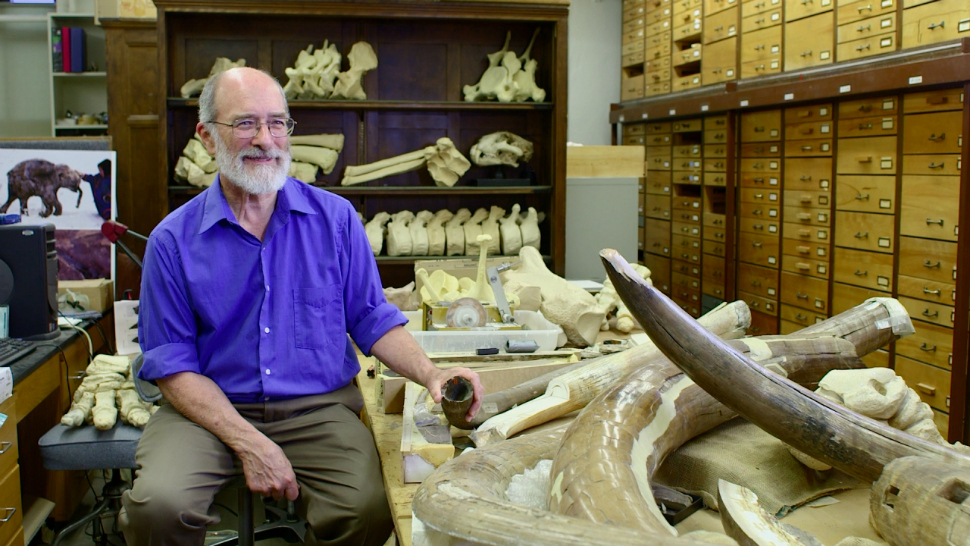John Tolley, November 7, 2016
The University of Michigan?s Museum of Natural History is working on something big.
You might even say that it?s mammoth.
Beginning this month, the public is able to view the Bristle Mammoth in all its glory thanks to the opening of a $48,000 exhibit space, specially built to display the skeletal remains of this ice age giant.
Featured in a LiveBIG video vignette earlier this year, the Bristle Mammoth was uncovered on a central Michigan farm and excavated by a university team in late 2015. Roughly 30 to 40 percent of the animal?s skeleton was discovered, and the condition of the bones may lead to a rewriting of human history in North America.
?There?s the opportunity, at this site,? said Dr. Daniel Fisher, lead researcher on the Bristle Mammoth, ?that we could push back our documented presence of humans in this part of the world.?
That?s because the animal appears to have been butchered, with certain parts removed and arranged in such a way as to suggest that the meat was being stored for later consumption. Archaeologists and anthropologists place human habitation of the North American continent to 13,000 years ago. Mammoths, however, have populated the area that is now the lower peninsula of Michigan as far back as 15,000 years ago. If human presence in association with this mammoth can be proven, and it turns out to be one of the early mammoths, that would mean a restructuring of human history.
Fisher and his colleagues are scheduled to return to the farm where the Bristle Mammoth was found for a second excavation, with the hope of recovering further skeletal remains and signs of human interaction. The Museum of Natural History, in anticipation, built in extra room for the potential growth of the exhibit.
Speaking with the University of Michigan news service, museum director Amy Harris explained that the new exhibit will not only illuminate the public on the nature of this mighty creature, but on the nature of archaeology itself.
?This exhibit is really about viewing research as an unfolding process of discovery. We don't find all the answers right away. It takes time to pursue lines of investigation.?
The Bristle Mammoth is set to be on display until January 2018, when it will move along with the museum to its new home in the Biological Science Building.
Click here to learn more and check out our video of the big dig.







